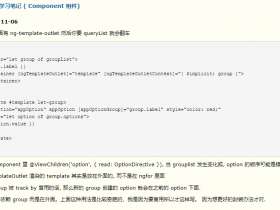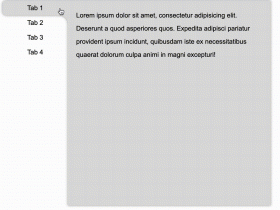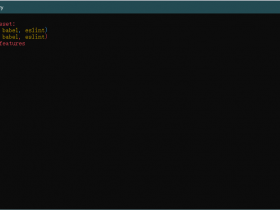- A+
![[开源]React/Vue通用的状态管理框架,不好用你来打我👀](https://www.ztsky.cn/wp-content/uploads/2022/09/20220915_63229f2851a74.jpg)
为了防止被打,有请“燕双鹰”镇楼?️♀️?️?️...o...
话说新冠3年,“状态管理框架”豪杰并起、群雄逐鹿,ReduxToolkit、Mobx、Vuex、Pinia、Dva、Rematch、Recoil、Zustand、Mirror...敢问英雄独钟哪厢?
Flux状态管理
笔者也用过很多态管理框架,大部分都是Flux框架的变种,只不过加上了一些自己的糖衣和辅助方法。
![[开源]React/Vue通用的状态管理框架,不好用你来打我👀](https://www.ztsky.cn/wp-content/uploads/2022/09/20220915_63229f286546e.png)
- ? 只要糖衣做得好,省时省力人人要!
- 后面随着
Typescript的普及,自动类型推断也是状态管理框架易用性的重要指标。
我们先简单回顾几款最主流的Flux状态管理框架的写法:
//基于Redux的Dva: { state(){ return {curUser: null} }, reducers: { setUser(state, {payload}) { return {...state, curUser: payload} }, }, effects: { *login({ payload: {username, password} }, { put, call }){ const { data } = yield call(api.login, username, password); yield put({ type: 'setUser', payload: data }); //无TS类型提示 } } }; //Vuex: { state(){ return {curUser: null} }, mutations: { setUser(state, curUser) { state.curUser = curUser; } }, actions: { async login({ commit }, {username, password}) { const { data } = await api.login(username, password); commit('setUser', data) //无TS类型提示 } } } //Pinia: { state(){ return {curUser: null} }, actions: { setUser(curUser) { this.curUser = curUser; } async login(username, password) { const { data } = await api.login(username, password); this.setUser(data) //有TS类型提示 } } } 果然都是一个妈生的,本质上无非就是玩3个概念:
- State
- 同步Action
- 异步Action
为Flux再添一把火?
既然都是玩这3个概念,大家都容易理解,那么要自荐的Elux就要闪亮登场了:
- Elux官网:https://eluxjs.com
- Github:https://github.com/hiisea/elux
先看它的基本用法:
class Model{ onMount() { //初始赋值State this.dispatch(this.actions._initState({curUser: null})); } @reducer //类似Vuex的mutations setUser(curUser) { //react中必需返回一个新state //return {...this.state, curUser}; this.state.curUser = curUser; } @effect() //类似Vuex的action async login(username, password) { const { data } = await api.login(username, password); await this.dispatch(this.actions.setUser(data)); this.getRouter().relaunch({url: HomeUrl}); } } - onMount:初始化钩子,在其中完成State的初始赋值。
- reducer:React系很容易理解,Vue系可以理解为mutation,它是改变State的唯一途径。
- effect:React系很容易理解,Vue系可以理解为action,它是异步Action。
所以从糖衣语法来说Elux其实与Dva/Vuex/Pinia也差不多,不同在于:
- Elux使用
Decorator装饰器语法来定义reducer(mutation)和effect(action),这样更简洁。 - Elux使用
Class来组织Model,有2点好处:- 可以通过类的继承和多态来复用公共逻辑。
- 可以通过TS的类成员权限(public/private/protected)来更好的封装。
Elux特性
除了糖衣语法,Elux还有其更深层次的创新:
![[开源]React/Vue通用的状态管理框架,不好用你来打我👀](https://www.ztsky.cn/wp-content/uploads/2022/09/20220915_63229f286eefc.png)
从图中可以看出:
- store中保存了所有state
- 每个Model管理store下的一个节点
- view从store中获取state
- dispatch(action)是触发reducer/effect的唯一途径
- reducer是纯函数,也是修改state的唯一途径
- effect可以处理任何异步操作,但不能直接修改state
- 一个action的派发类似于事件,可以触发多个reducer和effect监听
- view/effect/router都可以派发action
自动生成Action
这点类似于Pinia,不需要手动盲写类似于{type:"xxx.xxx",payload:xxxx}这样的Action结构体,而是通过方法自动生成:
const loginAction = stageActions.login('admin','123456'); //等于{type: 'user.login', payload:{username:'admin', password:'123456'}} dispatch(loginAction); 且具备完美的TS类型提示:
![[开源]React/Vue通用的状态管理框架,不好用你来打我👀](https://www.ztsky.cn/wp-content/uploads/2022/09/20220915_63229f28777a7.jpg)
模块化
Elux使用微模块来组合应用,每个微模块对应一个业务模型Model,每个Model使用reducer/effect来维护Store下的一个节点ModuleState。
微模块是一种前端业务模块化方案,至此不引申开来,可参见我的发文【微模块-前端业务模块化探索,拆解巨石应用的又一利器】
事件化
将action当做Model中的事件,将reducer、effect当做Handler,这意味着dispatch(action)可以触发多个reducer和effect。
通过事件总线机制,在保持各Model松散性的同时,加强Model之间的协同交互,举个例子:
假设有3个模块:user(用户模块)、article(文章模块)、my(个人中心模块)
当用户登录时,article(文章模块)需要将状态修改为可编辑,my(个人中心模块)需要获取最新通知
user/model.ts中编写登录逻辑:
// src/modules/user/model.ts export class Model extends BaseModel<ModuleState> { @reducer public setUser(curUser: User) { this.state.curUser = curUser; } @effect() public async login(username: string, password: string) { const { data } = await api.login(username, password); await this.dispatch(this.actions.setUser(data)); this.getRouter().relaunch({url: HomeUrl}); } } article/model.ts中通过reducer监听setUserAction:
// src/modules/article/model.ts export class Model extends BaseModel<ModuleState> { @reducer public ['user.setUser'](curUser: User) { //根据当前用户是否登录来决定是否可编辑 this.state.editable = curUser.hasLogin; } } my/model.ts中通过effect监听setUserAction:
// src/modules/my/model.ts export class Model extends BaseModel<ModuleState> { @reducer public updateNotices(notices: Notices[]) { this.state.notices = notices; } @effect() public async ['user.setUser'](curUser: User) { if(curUser.hasLogin){ const notices = await this.api.getNotices(); this.dispatch(this.actions.updateNotices(notices)); } } } user/views/Login.tsx中派发loginAction:
// src/modules/user/views/Login.tsx export default ({dispatch}) => { const login = () => { dispatch(userActions.login('admin', '123456')); }; return ( <div> <button onClick={login} >登录</button> </div> ); } 统一化
数据模式有2大基本阵营:ImmutableData 和 MutableData。Redux是ImmutableData阵营的代表;Vue为MutableData的代表。
Elux可以同时兼容这2种数据模式,它们的唯一区别在reducer中:
- ImmutableData:要求返回一个新数据,不可以修改原数据。
- MutableData:可以直接修改原数据。
class Model{ @reducer setUser(curUser) { //vue中可以直接修改state: this.state.curUser = curUser; //react中必需返回一个新state //return {...this.state, curUser}; } } 当然,在MutableData模式下,返回一个新数据也是可以的,这为跨React和Vue项目共享Model提供了解决方案。
await dispatch
actionHander中如果有异步操作,将返回一个promise,可以await其执行,例如:
// src/modules/user/views/Login.tsx const onSubmit = (values: HFormData) => { const result = dispatch(userActions.login(values)); result.catch(({message}) => { //如果出错(密码错误),在form中展示出错信息 form.setFields([{name: 'password', errors: [message]}]); }); }; 跟踪effect执行情况
通常effect中包含异步操作,对于异步操作我们通常都需要显示Loading,Elux中可以很方便的跟踪它的执行情况,只需要在装饰器effect()中传入Loading状态Key名即可。
- @effect('this.loginLoading'):表示将执行情况注入
this.state.loginLoading中 - @effect() 不传参数等于@effect('stage.globalLoading'):表示将执行情况注入
stage.state.globalLoading中 - @effect(null):参数为null表示不跟踪执行情况
// src/modules/user/model.ts export class Model extends BaseModel<ModuleState> { @effect('this.loginLoading') //将该方法的执行情况注入this.state.loginLoading中 public async login(username: string, password: string) { const { data } = await api.login(username, password); await this.dispatch(this.actions.setUser(data)); this.getRouter().relaunch({url: HomeUrl}); } } 在View中使用loginLoading状态
// src/modules/user/views/Login.tsx export default ({dispatch, loginLoading}) => { return ( <div> <button onClick={login} disable={loginLoading==='Start'} >登录</button> </div> ); } 自动合并和维护Loading队列
不仅可以很方便的跟踪和注入loading状态,框架还自动维护loading队列,比如相同Key名的多笔loading状态将自动合并成队列管理(队列中的任务全部完成即改变loading状态)。
自动区分浅度Loading和深度Loading
export type LoadingState = 'Start' | 'Stop' | 'Depth'; 比如不超过1秒的loading为浅度Loading,否则为深度Loading,这样区分的好处是:对于浅度Loading只需要防止用户重复点击,视觉上用户不用感知,否则会出现一闪而过的Loading界面,反而会影响用户体验。
const Component: FC<Props> = ({loadingState}) => { return ( <div className="global-loading"> {loadingState === 'Depth' && <div className="loading-icon" />} </div> ); }; 方便的错误处理
effect执行中出现任何失败或者错误,都将自动派发一个stage._error的内置action,可以监听它来集中处理错误:
// src/modules/stage/model.ts export class Model extends BaseModel<ModuleState> { @effect(null) protected async ['this._error'](error: CustomError) { if (error.code === CommonErrorCode.unauthorized) { this.getRouter().push({url: '/login'}, 'window'); }else{ alert(error.message); } throw error; } } 支持泛监听
可以使用一个Hander监听多个Action:
- 使用
,符号分隔多个actionType - 使用
*符号作为moduleName的通配符 - 使用
this可以指代本模块名
class Model extends BaseModel @effect() //同时监听2个模块的'_initState' async ['moduleA._initState, moduleA._initState'](){ console.log('moduleA/moduleB inited'); } @effect() //同时监听所有模块的'_initState' async ['*._initState'](){ console.log('all inited'); } } 还可以路由守卫
Elux中的路由发生跳转时会自动派发几个内置的action:
stage._testRouteChange:是否允许本次跳转。你可以监听它,阻止路由跳转:export class Model extends BaseModel<ModuleState> { private checkNeedsLogin(pathname: string): boolean { return pathname.startsWith('/admin/') } @effect(null) protected async ['this._testRouteChange']({url, pathname}) { if (!this.state.curUser.hasLogin && this.checkNeedsLogin(pathname)) { throw new CustomError(CommonErrorCode.unauthorized, '请登录!'); } } }stage._beforeRouteChange:路由即将跳转。你可以监听它,执行某些逻辑...stage._afterRouteChange:路由跳转完成。你可以监听它,执行某些逻辑...
多实例历史快照
- 路由push时你可以将当前Store实例冻结起来,并保存在历史栈中。
- 路由back时将自动激活之前被冻结的Store实例,快速恢复历史状态。
![[开源]React/Vue通用的状态管理框架,不好用你来打我👀](https://www.ztsky.cn/wp-content/uploads/2022/09/20220915_63229f288053e.png)
自动清理无用状态
传统全局Store有个很大的弊端,就是Store中的状态会不断累积,缺乏自动释放机制。比如当前路由从用户列表跳转到了文章列表,如果不主动操作,Store中的userList可能一直存在。
Elux改进了这个痛点,每次路由发生变化时都将创建一个空的Store,然后挑选出有用的状态重新挂载,这也相当于一种自动垃圾回收机制。
应用
Elux框架奉行轻UI、重Model的领域驱动理念,推荐将业务逻辑与UI逻辑剥离,进行抽象的业务逻辑建模,从而让业务Model可以跨框架、跨平台、跨工程复用。
![[开源]React/Vue通用的状态管理框架,不好用你来打我👀](https://www.ztsky.cn/wp-content/uploads/2022/09/20220915_63229f2943c6a.png)
![[开源]React/Vue通用的状态管理框架,不好用你来打我👀](https://www.ztsky.cn/wp-content/uploads/2022/09/20220915_63229f294e78b.png)
而其内置的状态管理框架,有效的支撑了这一设计理念,更多信息参见:
最后
好了,感谢小伙伴们耐心看到这里,正如标题所言,如果还是觉得不好,现在可以来打我了?,坐标:广西东兴,o友情提醒:泡面不要带少了哦...




